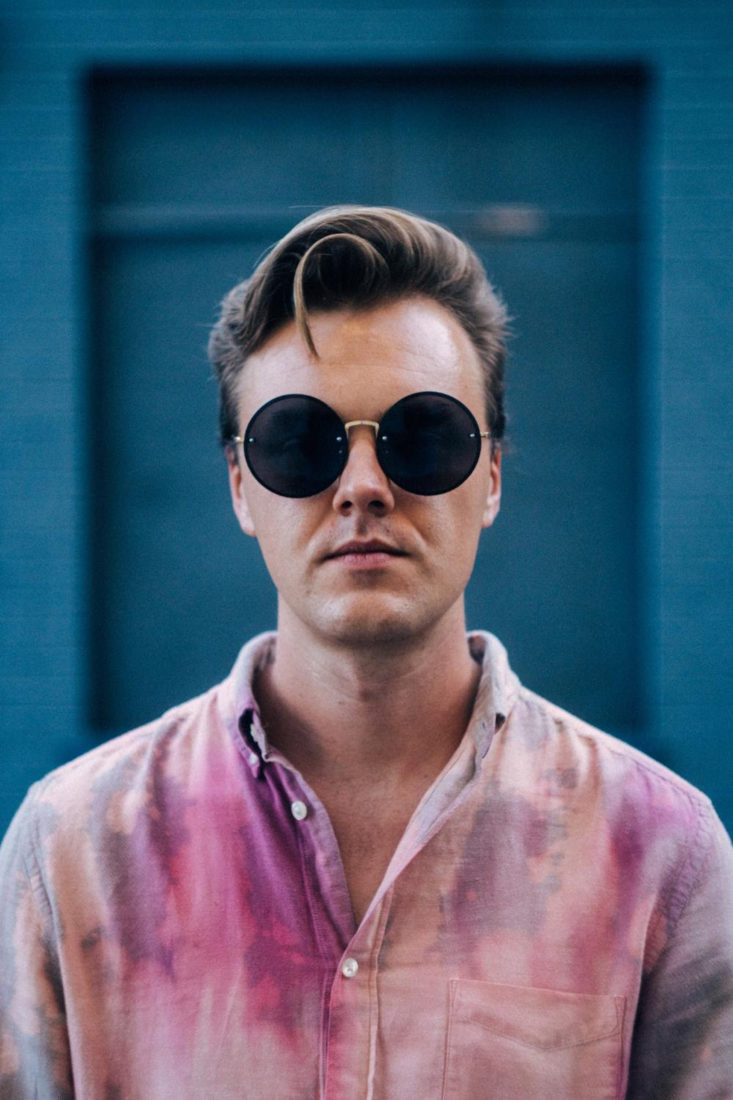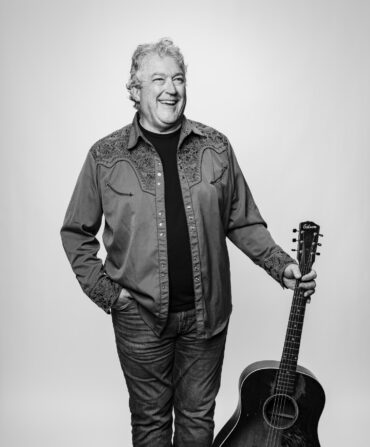Parker Millsap has always kept listeners guessing, shifting seamlessly from acoustic troubadour to electric rocker—often within the same live set—since bounding onto the Americana scene in 2014 with his self-titled breakout album. “What’s exciting to me is that I get to change,” Millsap told G&G around the release of his last album, Other Arrangements, in 2018. “I don’t have to meet this…whatever the ideal image of the songwriter is. I like to rock out.”
On the forthcoming Be Here Instead, Millsap continues his sonic evolution, this time finding his footing somewhere in the middle. “I feel like this batch of songs shows something I learned in the past three years,” Millsap says with a laugh. “If a song is really good—and the lyrics and the melody and the chords that are moving beneath all of it stand on their own—you don’t have to scream and yell or do vocal tricks.”
The new songs are more introspective than his previous work, though that’s not to say that Be Here Instead is entirely quiet or restrained. Scream-out-loud songs like “Dammit” still show off Millsap’s rougher edge—but the 28-year-old songwriter shines on softer numbers. On “In Between,” for example, which G&G is proud to premiere, Millsap’s earnest, no-frills vocals tumble out over understated strumming, with the occasional sparse harmony accentuating lyrics about being finished with one phase of life but not quite ready for the next.
G&G caught up with Millsap about the new album, how his Pentecostal upbringing still influences his work, and why “In Between” feels like the perfect song for right now. Hear the new track and read the interview below. Be Here Instead is out April 9 and available for pre-order now.
Tell us about the writing process behind “In Between.”
“In Between” was the last song I wrote before we started recording. A month-ish into the pandemic, I think everybody kind of felt the same. We knew there was a before and that there was going to be an after, and that pretty much everybody was going to think of their lives in those terms—before and after COVID—for a while. But being right in the middle of it was just bizarre. Sometimes songs just kind of fall out, and that was definitely like that—it might have been 45 minutes or an hour from start to finish, all in one sitting. It’s a song about that in-between space, where you know something big is happening but you’re not sure what yet. [Laughs] And what do we do in the meantime?
You titled the album Be Here Instead, a lyric from the song “Now Here.” Why did that phrase feel right?
Be Here Instead is, one, about how personal a lot of these lyrics are for me. In the past, I’ve written a lot more songs that were telling somebody else’s story. These songs are much more rooted in my own subconscious and idiosyncrasies, so that seemed to fit. “Be here, be in my body,” instead of telling somebody else’s story.
But also, it relates to quarantine: We were well into COVID by the time we were recording and finishing the record. Be Here Instead…it seems like we were all told that. [Laughs] Like, wherever you were going, you’re gonna be here instead for a while.
And it’s all related. Being in one place has really taught me a lot about myself and allowed me to do a lot of unpacking. I had never been home for more than four or five months at once, and being here for a year has been really enlightening and good for me.
You’re based in Nashville now, but you grew up in a small town in Oklahoma. How do you think your upbringing impacted you as a musician?
I grew up in Purcell, Oklahoma. I think they’re up to about nine thousand people now? [Laughs] My start with music was really kind of two-fold. First, my parents listened to cool music. They had a CD and cassette collection that included everything from gospel to AC/DC to Ry Cooder to blues musicians to singer-songwriters. I was just aware of a lot of music from a pretty young age. But I also grew up in a Pentecostal church with lots of music, and that’s where I started playing music and singing. Being part of that was so thrilling for me, and seeing the spiritual and social aspects of music play out in church really drew me toward it. I definitely drew a line between music and a connection to something larger than myself, a connection to other people.
This album doesn’t necessarily have as much overt religious imagery as some of your early work. Do you still notice the influence of those early experiences in the church?
I definitely feel like that is some kind of thread that will probably always run through my musical life. Music is part of something that’s greater than any one of us, and I definitely learned that in church. I think of these newer songs as maybe more akin to hymns. In the past, when I’ve written about religion, it’s been in the context of a story, of somebody’s personal experience, whereas I wrote a lot of these songs as prayers that I can say to myself. Everybody believes that prayer is something different. For some people, it’s meditation and not saying anything. For some people, it’s giving thanks for specific things to specific entities. But to me, one of the most powerful things about prayer or any practice related to it is that you get to hear yourself say the things that you need to say. A lot of these songs really feel like that for me.








